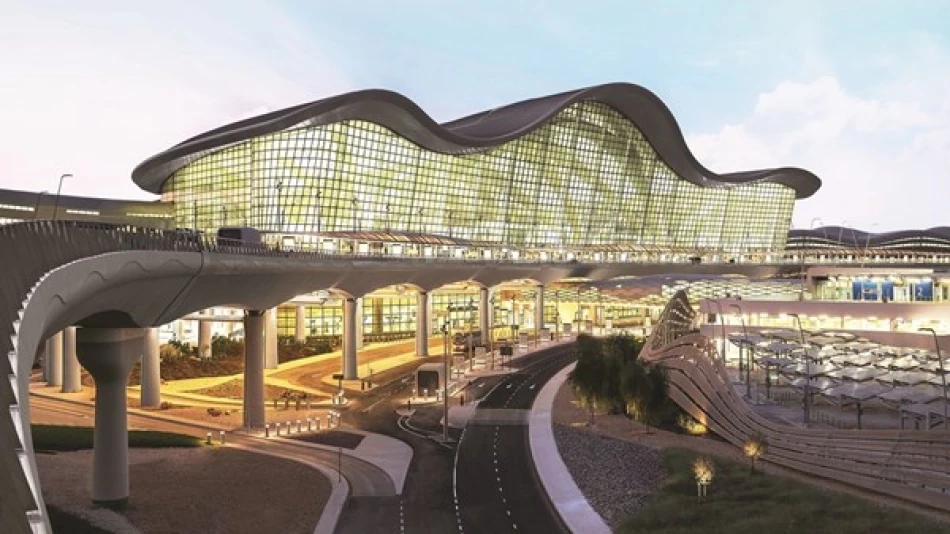
Abu Dhabi Airports Welcome 15.8 Million Passengers in First Half, Showcasing Emirate's Thriving Aviation Hub
Abu Dhabi Airports Surge 13% as UAE Positions Itself as Global Aviation Powerhouse
Abu Dhabi's airports have delivered their 17th consecutive quarter of growth, handling 15.8 million passengers in the first half of 2025—a 13.1% jump that underscores the UAE capital's aggressive push to rival Dubai and establish itself as a critical hub linking East and West. This surge reflects not just post-pandemic recovery, but a strategic transformation that could reshape Middle Eastern aviation dynamics.
Zayed International Airport Drives the Momentum
Zayed International Airport carried the bulk of this growth, processing 15.5 million passengers through June 2025, representing a 13.2% year-on-year increase. The airport handled 93,858 aircraft movements during the period, up 11.4% from 84,286 flights in the same timeframe last year.
These numbers signal more than routine expansion. Abu Dhabi is methodically building capacity to challenge Dubai International's dominance while positioning itself as an alternative gateway for travelers seeking to avoid the congestion that increasingly plagues its neighboring emirate.
Strategic Route Expansion Targets Key Markets
Abu Dhabi added 16 new destinations in the first half of 2025, with a clear focus on high-growth Asian and emerging markets. The additions include:
China Eastern Airlines launched four weekly flights to Shanghai, with daily service starting in September—a move that capitalizes on China's reopening and growing business ties between the UAE and China.
Seychelles Air now operates six weekly flights, tapping into the luxury tourism segment that Abu Dhabi increasingly courts.
FlyShaam to Damascus represents a calculated bet on Syria's gradual reintegration into regional commerce.
Indian budget carrier IndiGo expanded significantly, adding routes to Madurai, Bhubaneswar, and Visakhapatnam, making Zayed International its primary UAE hub—a notable win given India's massive diaspora population in the UAE.
The India Strategy Pays Dividends
IndiGo's expanded presence reflects Abu Dhabi's systematic approach to capturing traffic from India's tier-2 cities, where Dubai has less penetration. This strategy mirrors Singapore's successful model of connecting secondary Asian cities to global networks, potentially giving Abu Dhabi a competitive edge in the world's largest aviation market by passenger volume.
Cargo Operations Signal Economic Diversification
Abu Dhabi's airports handled 344,795 tons of cargo in the first half of 2025, with the most significant development being a partnership with JD Property, the infrastructure arm of Chinese e-commerce giant JD.com. The deal will create a 70,000 square meter advanced logistics facility targeting Gulf, Middle East, and North Africa markets.
This partnership positions Abu Dhabi to capture a slice of the booming e-commerce logistics sector, currently dominated by Dubai and Qatar. As Chinese companies seek alternative Middle Eastern hubs amid geopolitical tensions, Abu Dhabi's timing appears strategic.
Infrastructure Investments Signal Long-Term Ambitions
The completion of Sir Bani Yas Airport's rehabilitation demonstrates Abu Dhabi's commitment to developing niche markets, particularly eco-tourism in the Al Dhafra region. Meanwhile, Zayed International earned "Three Pearls" sustainability certification and won "World's Best Airport for Arrivals Experience" for the third consecutive year from Airports Council International.
The partnership with Canada's Bombardier to establish a dedicated maintenance facility at Al Bateen Executive Airport targets the growing business aviation sector, where Abu Dhabi sees opportunity to compete with established hubs in Geneva and Singapore.
Market Implications: A New Gulf Aviation Triangle
Abu Dhabi's consistent growth—17 straight quarters—suggests the emirate is successfully executing a long-term strategy rather than benefiting from temporary factors. This performance occurs as Dubai International faces capacity constraints and Qatar navigates post-World Cup adjustments.
For airlines, Abu Dhabi increasingly offers an attractive alternative: newer infrastructure, less congestion, and competitive incentives. For passengers, it means more routing options and potentially lower fares as competition intensifies.
The UAE's dual-hub strategy—with Dubai focusing on premium services and Abu Dhabi targeting volume growth and cargo—could prove more resilient than single-hub models employed by regional competitors. As global aviation continues its recovery, Abu Dhabi's measured expansion positions it to capture a larger share of the East-West transit market that has made the Gulf region central to global connectivity.
Most Viewed News

 Layla Al Mansoori
Layla Al Mansoori






